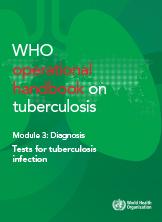Module 3: Tests for tuberculosis infection

 Feedback
Feedback
To aid understanding of how the different algorithms interlink to provide a final diagnosis for a person, illustrative scenarios are presented in Fig. 4.8 to Fig. 4.10. Three scenarios are provided, with two simulated pathways in each. The scenarios are based on three epidemiologic settings: high TB/HIV, high Hr-TB and high MDR/RR-TB. These examples are for illustrative purposes only – they do not represent a specific recommendation.
LPAs are a family of DNA strip-based tests that detect mutations associated with drug resistance. They do this either directly, through binding DNA amplification products (amplicons) to probes targeting the most commonly occurring mutations (MUT probes), or indirectly, inferred by the lack of binding the amplicons to the corresponding wild-type probes.

Successful implementation of the plan will require financial and human resource commitments from the ministry of health (MoH) or national tuberculosis (TB) programme (NTP), with possible support from implementing partners. Consider integrating TB testing on existing multidisease platforms in locations where integrated testing is feasible, to share costs across disease programmes. A budget should be developed to address activities in collaboration with key partners, using the considerations outlined below. Technical assistance may be needed.